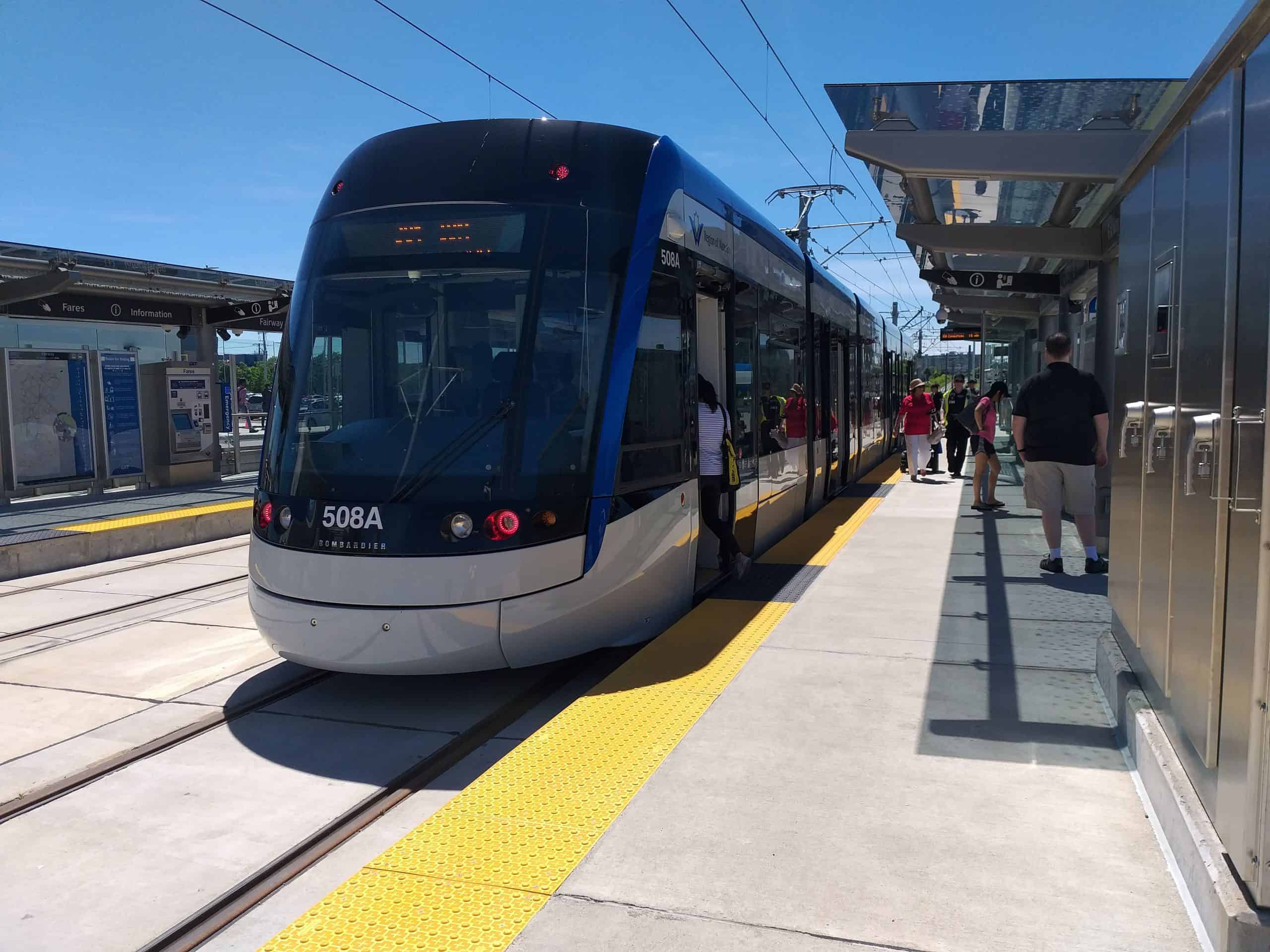PHOTOS: This Is What LRT Could Look Like in Mississauga
Published July 3, 2019 at 3:03 am

The Hurontario LRT (light rail transit) system is not scheduled to be up and running at least until 2022, and when completed could transform how people get around in Mississauga and parts of Brampton.
Many people, including those who read insauga, have been skeptical of or even downright hostile to the possibility of another option of moving around the city. Why? Because many have gotten the impression that the LRT will interfere with cars or will jam up traffic in perpetuity.
Even after Metrolinx announced that it will be nixing a ‘loop’ around the future ‘Mississauga downtown’, making the LRT a straight route, nothing has seemed to have quelled the opposition to this innovative technology that could really transform the way we move about in our communities.
So it’s lucky that during the Canada Day long weekend, I had an opportunity to check out what it was like to ride an actual light rail transit vehicle that goes through two cities in Ontario: Kitchener and Waterloo. The ION light rail system was recently finished, and opened operations as of June 21, running trains for free until after Canada Day. The route began from the south end at Fairway Mall in Kitchener and ended at Conestoga Mall in north Waterloo, consisting of 20 stations going both directions.
A bus route from the Fairway Mall to Cambridge will be in service until Phase 2 of the ION LRT is completed, which will result in a seamless LRT connection from Cambridge to Waterloo. And as you can see, there is Wifi aboard the actual train itself.
You may have noticed on the route map in the train that there are two loops, one around downtown Kitchener and the other around Waterloo’s downtown. What you have there is two stations that go north and two that only go south in the Kitchener loop, and one station each in the Waterloo loop only going one direction as well.
The Waterloo Square station (which is the station that goes northbound only to Conestoga) is actually located on the old Waterloo Spur rail line, thereby repurposing existing rail for modern day usage.
As for the route itself, although the Hurontario LRT is only going to be on Hurontario Street, the Waterloo ION runs on parts of King Street between mostly Kitchener and Waterloo Public Square but the rest of the route going north cuts through a dedicated track away from the main street.
Here’s a video of the trip between University of Waterloo station and Research and Technology Station.
And if you’re concerned that an LRT running outside your house or your business will lead to either loss of quality of life or loss in said business, the Waterloo LRT ran through a route beside several single detached dwellings and low rise apartments, as well as other businesses, without much of a hassle.
The LRTs run on their own dedicated lane, separate from vehicular traffic. Waterloo Region’s existing bus services operate alongside the LRT network. In fact, all the LRT stations have at least one connection to a local bus route or GO bus.
There are obvious differences between the cities of Kitchener and Waterloo and Mississauga and Brampton. Geographically, both city pairings are adjacent to one another in a north-south direction, but with drastically different populations. KW combined has less than 350,000 people, whereas Mississauga and Brampton combined have about 1.4 million.
Based on the vastly lower population, the advantages that KW have when it comes to running an LRT system through those two communities is that by servicing a smaller population, the system is not as congested and traffic tends to work with the system rather than against it. Also, the layout of the smaller cities (each with their own distinct downtown areas) allows for a much more pedestrian-friendly experience when it comes to the LRT.
While Mississauga and Brampton share a similar geographic border, both large cities are typical GTA suburbs with large swaths of industrial/commercial land to one side and residential subdivisions in the other. Businesses and residential properties are more separate from each other than they are in KW.
This means Hurontario will need actual storefronts and other amenities available along the route. And of course, the larger population means more traffic, and the car is always going to be king in Mississauga and Brampton.
What we should take away from the KW example is that the technical aspects are going to be similar, but the actual experience will vary depending on the communities that the LRT would be serving.
Will you be ready?
INsauga's Editorial Standards and Policies